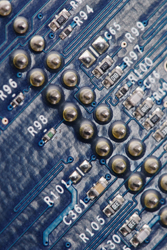Testing electronics at a low cost
High temperature electronics has emerged as a strategic technology for many key industrial sectors, such as the oil & gas extraction, automotive and avionics industries. Silicon on insulator (SOI) technology, more specifically, has added the advantages of light-weighting and fault-tolerant electronic systems, operating reliably even when exposed to temperatures as high as 200 degrees Celsius. To ensure their structural and operational integrity, the ATHIS project sought to develop dedicated strategies, enabling to test electronic devices under similar operating conditions to those exposed in field. The University of Newcastle upon Tyne was instrumental in providing an economical alternative to commercial 'dynamic burn-in' systems. To reduce the tests costs substantially, it was necessary to take measures to reduce the testing time. Furthermore, to ensure a good coverage of all possible faults which can occur in integrated and miniaturised distributed electronic systems, a combination of current and voltage testing schemes was adopted. The modular architecture of the high temperature testing scheme proposed by the ATHIS project partners allows it to be easily configured. Besides generating the thermal stimuli for the integrated circuit under test, the actual responses can be stored, analysed and dynamically manipulated. An off-chip current monitor was, for this purpose, preferred because of its time efficient response and low cost, as well as the significant flexibility provided for the test procedure. The enhanced capabilities of the test system have already been successfully demonstrated on safety and efficiency critical systems which will be incorporated in future automotive applications.



